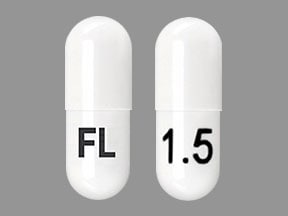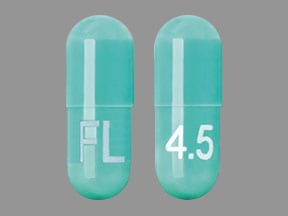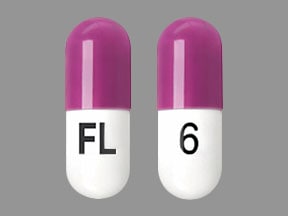What is Vraylar?
Vraylar is a prescription medicine used in adults:
- to treat schizophrenia
- for short-term (acute) treatment of manic or mixed episodes that happen with bipolar I disorder
- to treat depressive episodes that happen with bipolar I disorder (bipolar depression)
It is not known if Vraylar is safe and effective in children.
What is the most important information I should know about Vraylar?
Vraylar may cause serious side effects, including:
- Increased risk of death in elderly people with dementia related psychosis. Medicines like Vraylar can raise the risk of death in elderly who have lost touch with reality (psychosis) due to confusion and memory loss (dementia). Vraylar is not approved for the treatment of patients with dementia-related psychosis.
- Increased risk of suicidal thoughts or actions in children and young adults. Antidepressant medicines may increase suicidal thoughts or actions in some children and young adults within the first few months of treatment and when the dose is changed.
- Depression and other serious mental illnesses are the most important causes of suicidal thoughts and actions. Some people may have a particularly high risk of having suicidal thoughts or actions. These include people who have (or have a family history of) depression, bipolar illness (also called manic-depressive illness), or a history of suicidal thoughts or actions.
How can I watch for and try to prevent suicidal thoughts and actions in myself or a family member?
- Pay close attention to any changes, especially sudden changes in mood, behaviors, thoughts, or feelings. This is very important when an antidepressant medicine is started or when the dose is changed.
- Call the healthcare provider right away to report new or sudden changes in mood, behavior, thoughts, or feelings.
- Keep all follow-up visits with the healthcare provider as scheduled. Call the healthcare provider between visits as needed, especially if you have concerns about symptoms.
Call a healthcare provider right away if you or your family member has any of the following symptoms, especially if they are new, worse, or worry you:
- thoughts about suicide or dying
- new or worse depression
- feeling very agitated or restless
- trouble sleeping (insomnia)
- acting aggressive, being angry, or violent
- an extreme increase in activity and talking (mania)
- attempts to commit suicide
- new or worse anxiety
- panic attacks
- new or worse irritability
- acting on dangerous impulses
- other unusual changes in behavior or mood
Who should not take Vraylar?
Do not take Vraylar if you are allergic to cariprazine. See the end of this Medication Guide for a complete list of ingredients in Vraylar.
What should I tell my healthcare provider before taking Vraylar?
Before taking Vraylar, tell your healthcare provider about all of your medical conditions, including if you:
- have or have had heart problems or a stroke
- have or have had low or high blood pressure
- have or have had diabetes or high blood sugar, or a family history of diabetes or high blood sugar. Your healthcare provider should check your blood sugar before you start and during treatment with Vraylar.
- have or have had high levels of total cholesterol, LDL cholesterol, or triglycerides or low levels of HDL cholesterol.
- have or had seizures (convulsions)
- have or have had kidney or liver problems
- have or had a low white blood cell count
- are pregnant or plan to become pregnant. Vraylar may harm your unborn baby. Talk to your healthcare provider about the risk to your unborn baby if you take Vraylar during pregnancy.
- Tell your healthcare provider if you become pregnant or think you are pregnant during treatment with Vraylar.
- If you become pregnant during treatment with Vraylar, talk to your healthcare provider about registering with the National Pregnancy Registry for Atypical Antipsychotics. You can register by calling 1-866-961-2388 or go to womensmentalhealth.org
- are breastfeeding or plan to breastfeed. It is not known if Vraylar passes into your breast milk. Talk to your healthcare provider about the best way to feed your baby during treatment with Vraylar.
Tell your healthcare provider about all the medicines you take, including prescription and over-the-counter medicines, vitamins, and herbal supplements.
Vraylar and other medicines may affect each other causing possible serious side effects. Vraylar may affect the way other medicines work, and other medicines may affect how Vraylar works.
Your healthcare provider can tell you if it is safe to take Vraylar with your other medicines. Do not start or stop any medicines while taking Vraylar without talking to your healthcare provider first.
Know the medicines you take. Keep a list of your medicines to show your healthcare provider and pharmacist when you get a new medicine.
How should I take Vraylar?
- Take Vraylar exactly as your healthcare provider tells you to take it. Do not change the dose or stop taking Vraylar without first talking to your healthcare provider.
- Vraylar can be taken with or without food.
- If you take too much Vraylar, call your healthcare provider or Poison Control Center or go to the nearest hospital emergency room, right away.
What should I avoid while taking Vraylar?
Do not drive, operate machinery, or do other dangerous activities until you know how Vraylar affects you. Vraylar may make you drowsy.
Do not become too hot or dehydrated during treatment with Vraylar.
- Do not exercise too much.
- In hot weather, stay inside in a cool place if possible.
- Stay out of the sun.
- Do not wear too much clothing or heavy clothing.
- Drink plenty of water.
What are the possible side effects of Vraylar?
Vraylar may cause serious side effects, including:
- See “What is the most important information I should know about Vraylar?”
- Stroke (cerebrovascular problems) in elderly people with dementia-related psychosis that can lead to death.
- Neuroleptic malignant syndrome (NMS) is a serious condition that can lead to death. Call your healthcare provider or go to the nearest hospital emergency room right away if you have some or all of the following signs and symptoms of NMS:
- high fever
- confusion
- changes in your breathing, heart rate, and blood pressure
- stiff muscles
- increased sweating
- Uncontrolled body movements (tardive dyskinesia). Vraylar may cause movements that you cannot control in your face, tongue, or other body parts. Tardive dyskinesia may not go away, even if you stop taking Vraylar. Tardive dyskinesia may also start after you stop taking Vraylar.
- Vraylar may cause late occurring side effects.
- Vraylar stays in your body for a long time. Some side effects may not happen right away and can start a few weeks after you start taking Vraylar, or if your dose of Vraylar increases. Your healthcare provider should monitor you for side effects for several weeks after you start and after any increase in your dose of Vraylar.
- Vraylar may cause problems with your metabolism such as:
- High blood sugar (hyperglycemia) and diabetes. Increases in blood sugar can happen in some people who take Vraylar. Extremely high blood sugar can lead to coma or death. Your healthcare provider should check your blood sugar before you start, or soon after you start Vraylar, and then regularly during long-term treatment with Vraylar.
- Call your healthcare provider if you have any of these symptoms of high blood sugar during treatment with Vraylar:
- feel very thirsty
- feel very hungry
- feel sick to your stomach
- need to urinate more than usual
- feel weak or tired
- feel confused, or your breath smells fruity
- Increased fat levels (cholesterol and triglycerides) in your blood. Your healthcare provider should check the fat levels in your blood before you start, or soon after you start Vraylar, and then periodically during treatment with Vraylar.
- Weight gain. You and your healthcare provider should check your weight before you start and often during treatment with Vraylar.
- Low white blood cell count. Your healthcare provider may do blood tests during the first few months of treatment with Vraylar.
- Decreased blood pressure (orthostatic hypotension). You may feel lightheaded or faint when you rise too quickly from a sitting or lying position.
- Falls. Vraylar may make you sleepy or dizzy, may cause a decrease in your blood pressure when changing position (orthostatic hypotension), and can slow your thinking and motor skills which may lead to falls that can cause fractures or other injuries.
- Seizures (convulsions).
- Problems controlling your body temperature so that you feel too warm. See “What should I avoid while taking Vraylar?”
- Difficulty swallowing that can cause food or liquid to get into your lungs.
The most common side effects of Vraylar include:
- difficulty moving or slow movements
- tremors
- uncontrolled body movements
- restlessness and feeling like you need to move around
- sleepiness
- nausea
- vomiting
- indigestion.
These are not all the possible side effects of Vraylar.
Call your doctor for medical advice about side effects. You may report side effects to FDA at 1-800-FDA-1088.
Vraylar Images
General information about the safe and effective use of Vraylar
Medicines are sometimes prescribed for purposes other than those listed in a Medication Guide. Do not use Vraylar for a condition for which it was not prescribed. Do not give Vraylar to other people, even if they have the same symptoms that you have. It may harm them. You can ask your pharmacist or healthcare provider for information about Vraylar that is written for healthcare professionals.
How should I store Vraylar?
- Store Vraylar at room temperature, between 68°F to 77°F (20°C to 25°C).
Keep Vraylar and all medicines out of the reach of children.
What are the ingredients in Vraylar?
Active ingredient: cariprazine hydrochloride
Inactive ingredients: gelatin, magnesium stearate, pregelatinized starch, shellac, and titanium dioxide.
Colorants include: black iron oxide, FD&C Blue I, FD&C Red 3, FD&C Red 40, or yellow iron oxide.
For more information, go to www.vraylar.com or call 1-800-678-1605






